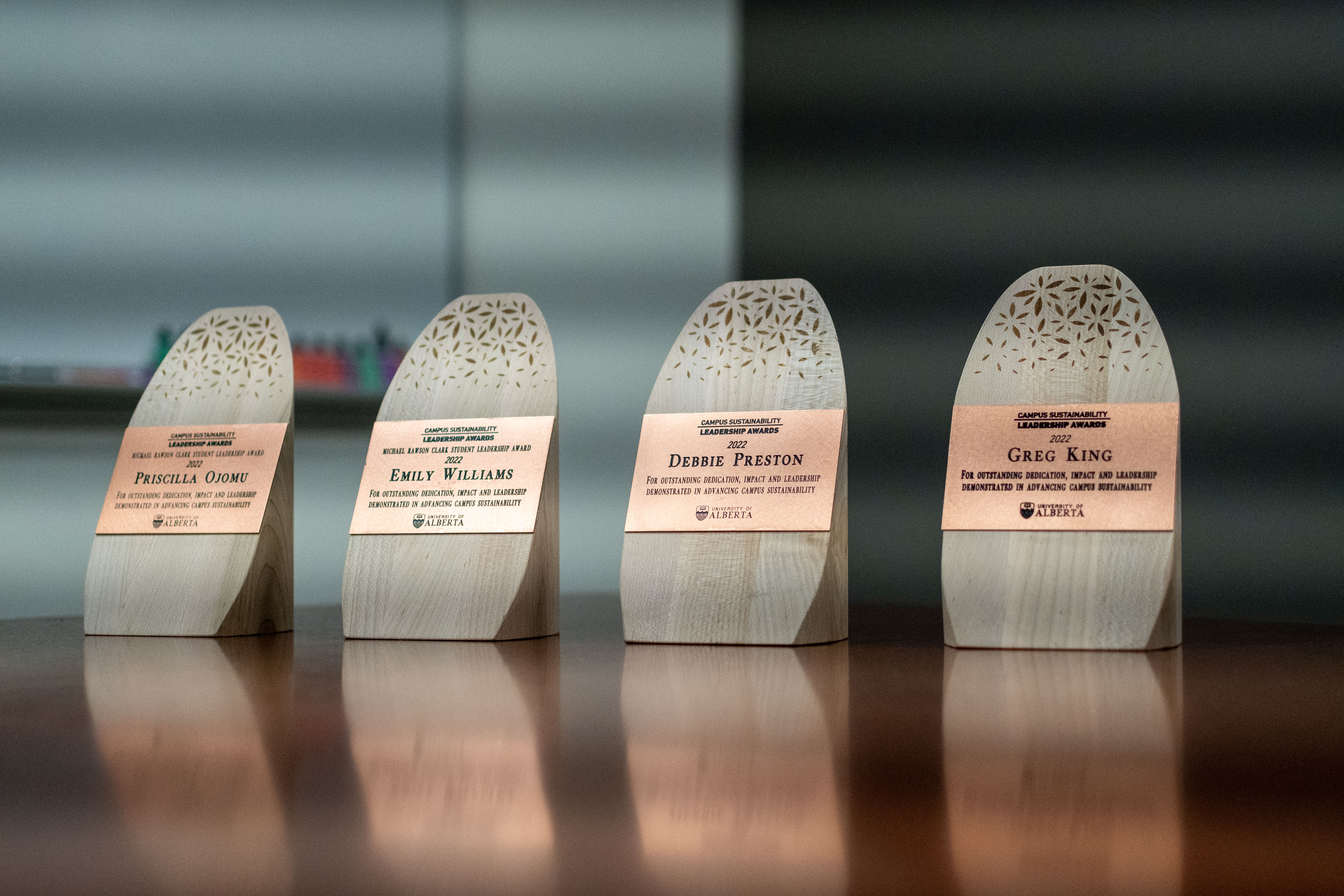Marketing instructor explains how to persuade the public to take action for sustainability
The same marketing strategies that motivate us to buy phones, deodorant and Justin Trudeau-scented candles can also be used to persuade us to change our behaviours, says Webb Dussome, an instructor in the Alberta School of Business.
One of Dussome’s courses, MARK 455 - Sustainability and Responsible Marketing, covers the different tactics marketers can use to get the public on board with addressing social and environmental issues such as climate change, poverty and gender inequality. This type of marketing, which is designed to get people to adopt socially-beneficial behaviours, is also called “social marketing.”
Working in partnership with Community Service-Learning, MARK 455 gives students the opportunity to collaborate with local not-for-profits on things like awareness campaigns, social media strategies and branding. Students have worked with organizations such as the Edmonton Food Councill, Sustain SU, Paths for People and Waste Free Edmonton.
Dussome has years of experience in marketing in the private and not-for-profit sectors. Now he uses the skills he’s learned over his career to teach undergraduate and graduate business students.
I talked to Dussome about what makes an effective sustainability-oriented marketing campaign, why marketing can be a force for good and why he loves teaching MARK 455.

Webb Dussome
What strategies do marketers use to get people to behave in ways that are more sustainable?
Social marketing works on a continuum. Our job is not to solve all the world’s problems—our job is to get people to take the next step towards a solution.
We seek target markets, or people who may be on the fence about a particular issue–for example, riding a bike to work instead of driving. It’s generally not worthwhile to target people who would be fundamentally opposed to riding a bike to work, or people who are already committed to riding a bike to work. But the people on the fence, all they need sometimes is a nudge. However, instead of suggesting to these people that they ride their bikes through the winter and five days a week, we’ll ask: ”Initially, how can we get you to ride one day a month, or three days a month?” If you start by asking too much, you can overwhelm people, and they won’t undertake the desired action.
We also consider marketing fundamentals. Fundamental No. 1 is that people will ask “what’s in it for me?” The idea of reducing your greenhouse gas emissions or helping our population here in Alberta (or elsewhere) solve a social issue will motivate some people, but many others will be asking “what’s in it for me?” In the bike riding example, we could say: it’s good for your physical wellbeing, you will reduce your carbon footprint,, it’s good for your mental health, or it saves you money that would have been spent on gas. The key part for us in social marketing is to figure out which one of those is going to be the most effective in terms of motivating someone toward a behaviour-change objective.
Which types of messages seem to be most effective at getting people to change their behaviours?
It depends on the behaviour. On the health promotion side, we’ve gone through this COVID period where the Governments of Canada, Alberta and Edmonton want you to get a vaccination. If I just said to you—“get a vaccination, it’s good for you” there are people who will be convinced by that. But in order to move the needle further you often need a more emotional approach. Advertising that tells a story about how people have been personally affected by the virus, for example, by losing loved ones, sticks out because it’s more emotion-based.
With climate change we can run a lot of ads around fear: natural disasters are happening, sea levels are rising, this is a climate emergency. But those kinds of techniques don’t work very well unless you provide a solution. If it’s too scary people just block the ad out and think "I can’t deal with this, I don’t know what to do, and it’s way too big for me.” So that’s where a more realistic approach will be to break the problem down into smaller steps that people may more easily achieve, like turning the thermostat down or using a personal vehicle less frequently.
What do you want people to know about MARK 455?
Students really care about these issues. One of the great personal satisfactions I get from being involved with this course is to take the interest and concern students have for sustainability and to give them tools to create action for sustainable causes. So I always think it’s such a pleasure to have an opportunity to teach a course like that. I really do think it makes a difference.
Webb Dussome is an affiliate of the Sustainability Council. Learn more about the benefits of joining our Affiliate Network.


